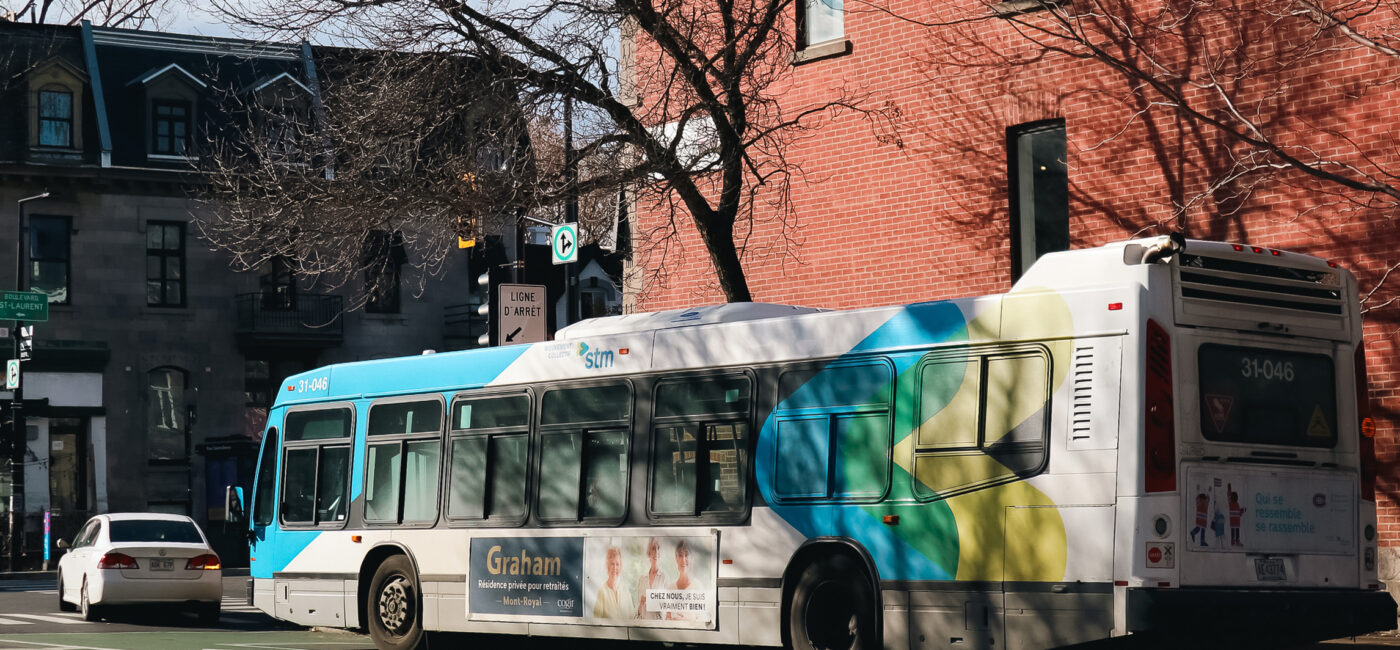The successful development of sustainable public transportation is key in the global fight against climate change, due to its potential to reduce carbon dioxide emissions and mitigate land-use effects. On average, personal vehicles produce one pound of carbon dioxide per passenger mile, while public buses, if assumed to be operating at 25 per cent capacity, produce only 0.64 pounds of carbon dioxide per passenger mile. Ensuring high use rates of public transportation also helps increase their impact: The closer buses are to capacity, the lower their emission per passenger mile.
Researchers at Transportation Research at McGill (TRAM) recently published an article in the journal Transport Policy analyzing how public perception influences sustainable public transportation development. They applied these analyses to two current projects in Montreal: A light-rail transit (LRT) system and a bus-rapid transit (BRT) system.
The Montreal LRT, with 27 open stations, is expected to be fully operational by 2027. Meanwhile, the BRT system, centred in Pie-IX, began its extension to Notre-Dame East Street in fall 2023.
Lancelot Rodrigue, a PhD candidate working under Professor Ahmed El-Geneidy at McGill’s School of Urban Planning, helped design these analysis projects and co-authored the paper.
“It was really to understand [the LRT and BRT] individually, but also to compare them to different types of projects,” Rodrigue said in an interview with The Tribune. “[We wanted to see] what drives support for these types of projects.”
To collect data, TRAM sent an anonymous survey to Montreal residents, analyzing both quantitative and qualitative responses.
“We always tend to focus on very objective data when we look at projects. But sometimes we forget that decision-making is not necessarily done solely from an objective standpoint, so we really wanted to go into this project taking into account the subjectivity of a lot of people’s perceptions,” Rodrigue explained.
The team found a critical difference between the quantitative and qualitative responses: While people generally gave positive ratings in the quantitative section, the open-ended qualitative responses were less favourable.
“When you ask open-ended questions, first of all, not everyone answers them. People who feel neutral won’t necessarily answer, but the people that do answer almost always tend to be more negative,” Rodrigue said. “[This trend] is something that has been found in literature across a lot of different domains.”
The team also found that the public perception was highly impacted by the speed at which the government pursued the construction of these projects.
“There’s kind of a duality between how fast [the project governance team is] willing to go, but also how properly [the project governance team is] planning the projects,” Rodrigue said.
They found that people generally wanted their projects completed quickly, but also wanted to ensure there was enough time to prevent common problems during development. Furthermore, they wished for plans to be public to encourage community input without derailing the project’s timeline. Given all of these concerns, policymakers need to achieve a delicate balance to ensure timely project completion while addressing community concerns and maintaining project integrity.
To better understand these dynamics, the TRAM team is continuing to analyze similar survey data.
“The data from this paper was the second wave, and now we’re just finishing the fifth wave that we just collected,” Rodrigue said.
While their surveys are anonymous, TRAM collects demographic information to contextualize their findings within the Montreal population. They have noticed the results they receive tend to be skewed in favour of upper-class, white individuals, which is something they are actively working on addressing.
Through targeted advertising, the team has successfully altered their samples in more recent surveys to balance data received in terms of gender and are hoping that balance across race and income level will soon follow.
“We’ve done a lot more targeted advertising, and we’re now weighing our sample to correct these issues as much as possible,” Rodrigue explained. “We’re trying to get a portrait that’s more representative of the Montreal population.”
By looking into the factors that dictate policy decisions, the TRAM team is working towards new policy guidelines that can help support both the decision-makers and the general public in future urban planning and transportation development.


